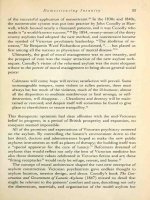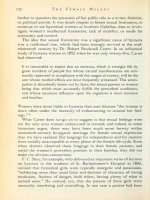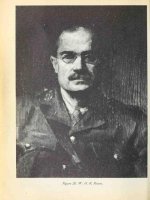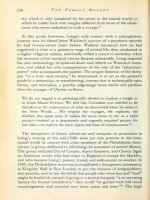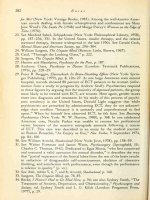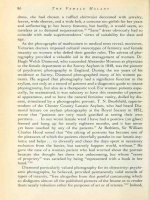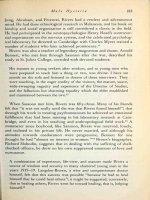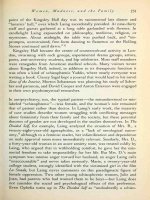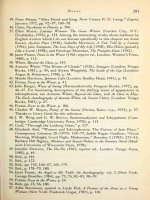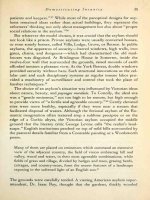The female malady women madness and engl 45
Bạn đang xem bản rút gọn của tài liệu. Xem và tải ngay bản đầy đủ của tài liệu tại đây (127.19 KB, 1 trang )
Domesticating Insanity
33
of the successful application of nonrestraint. 29 In the 1830s and 1840s,
the nonrestraint system
well,
was put
which housed nearly
made
it
a
into practice
by John Conolly at Hanit was Conolly who
thousand patients, and
"a world-known success." 30 By 1854, twenty-seven of the thirty
county asylums had adopted the new method, and nonrestraint became
the symbol of Victorian psychiatric leadership.
straint," Sir
first
among
"The
Benjamin Ward Richardson proclaimed,
all
abolition of re.
has placed us
.
the nations as physicians of mental disease." 31
Ultimately, the goal of moral
the prospect of cure
was
management was
to cure insanity,
new asylum
the major attraction of the
niques. Conolly's vision of the reformed asylum
tribute to the
".
power of moral management
was
to bring
the
and
tech-
most eloquent
about general social
peace:
Calmness
will
come; hope
will revive; satisfaction will prevail.
unmanageable tempers, some violent or
sullen patients, there
Some
must
always be; but much of the violence, much of the ill-humour, almost
all
the disposition to meditate mischievous or fatal revenge, or self-
destruction, will disappear.
.
.
.
Cleanliness and decency will be main-
tained or restored; and despair itself will sometimes be found to give
place to cheerfulness or secure tranquillity.
This therapeutic optimism had clear
32
affinities
with the mid- Victorian
and expansion, no
belief in progress; in a period of British prosperity
conquest seemed impossible.
All of the promises and expectations of Victorian psychiatry centered
on the asylum. By controlling the lunatic's environment down to the
last detail, doctors and administrators hoped to make the new public
asylums instruments as well as places of therapy; the building itself was
a "special apparatus for the cure of lunacy." Reformers
asylums that would
reflect
also those domestic values celebrated in Victorian fiction
"fitting receptacles"
would
The concept of moral
dreamed of
not only the best of Victorian medicine but
truly be refuge, retreat,
and
art;
these
and home. 33
architecture shaped the vast
new
enterprise of
asylum construction. Victorian psychiatrists gave endless thought to
asylum location, interior design, and decor. Conolly's book The Construction
and Government of Lunatic Asylums (1847) missed no
might be relevant to the patients' comfort and
detail that
care, describing not
only
the dimensions, materials, and organization of the model asylum but
